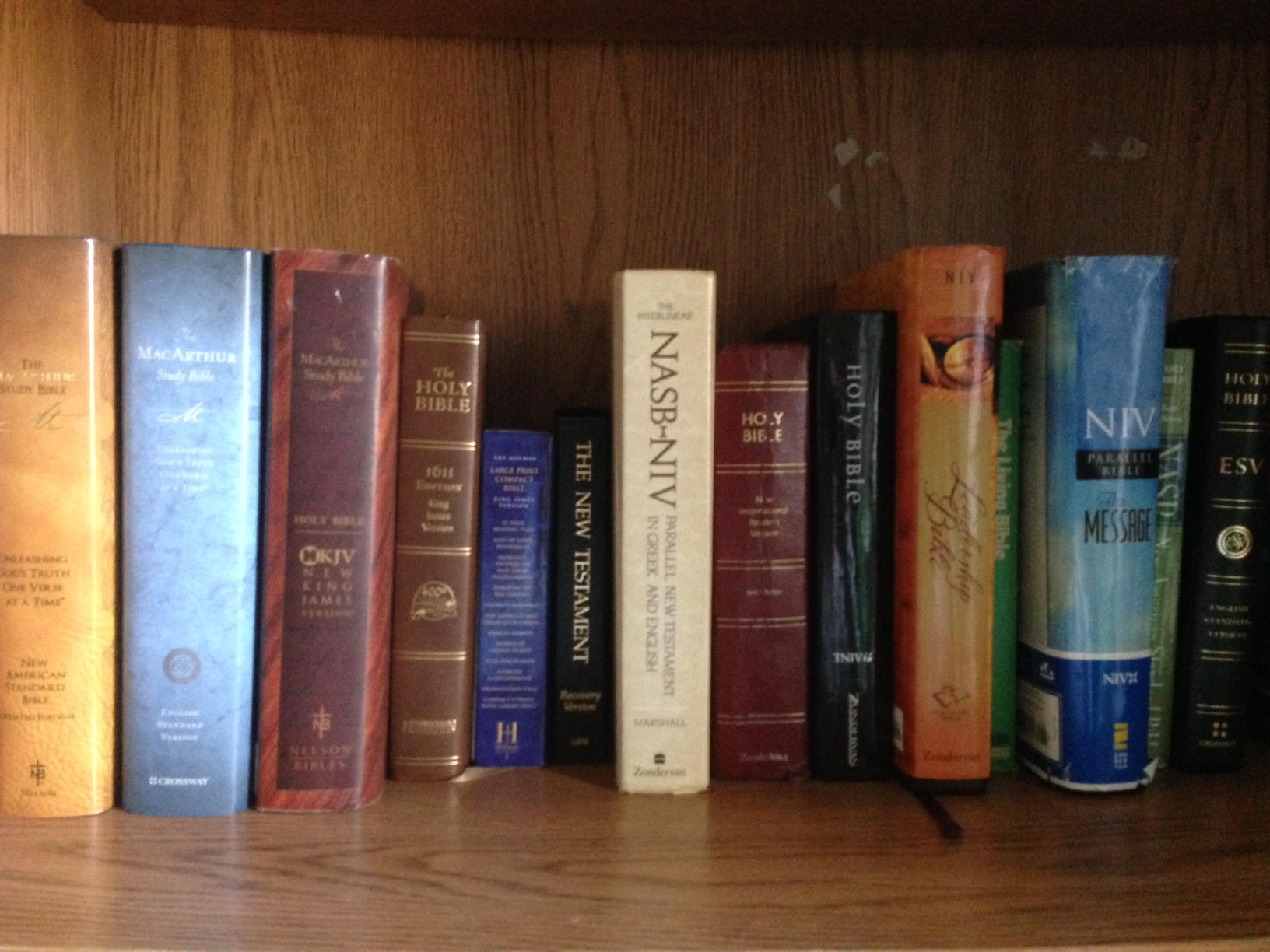If you have walked into the Bible section at your local bookstore, you will be enamored with multiple translations and version; enough to make even the caution look twice before getting a new Bible. Which one to get? What translation is the best?
I am frequently consulted on what Bible to get, mostly because I typically read a different translation every year so I am aware of what is out there. Some people have some hard-fast rules like some people that think only the King James Version is the suitable Bible version. Others may want something that is easier to read.
My take on the matter of Bible translation is that a person should get a translation that they can read, understand, and even find visually stimulating. If you are going to get a book to read and study, it should be easy to read. Considering the shear volume of Bibles available, you can find one that the font and letter size is easy to read, the headers are attractive, and you can read the words without a challenge.
After you consider the style, it is time to find a translation. In general, there are two types of translations: Literal and Dynamic Equivalence. Most translations are a combination between these to some degree. The Literal translation means that the words from the original language are translated directly into the language of the Bible and arranged for readability. The New American Standard Bible (NASB) is the most literal translation readily available. Dynamic Equivalence means that the Bible is translated thought for thought. The most thought for thought translation is the New International Version (NIV). Most Bibles like the King James Version (KJV) or the English Standard Version (ESV) combine literal translation with dynamic language.
Another issue has arisen over the last few years with what are called the Gender Inclusive styles of translations. This means that in many instances, the Bible lists male-centered language like many other languages. When the translators translate the Bible into English, they need to deal with those. In many older translations, all of those have been translated into the corresponding male forms. The Gender Inclusive translations translate the pronounces as gender neutral, s0 ‘he’ becomes ‘they’. The New Century Version (NCV) and New Living Translation (NLT) are examples of these.
To pick your favorite translation, you need to consider these factors and determine which method of translation works for your taste and read a few Bibles to determine the best plan for your study. I personally like literal translations, so my preferred translation is NASB, though I read and study many different translations. As far as gender inclusive translation, I think that some of the changes are fine because of the context of the words, but there are certain situations where the male form of the word was the intention, so I like to study scripture that can keep that boundary in place.
The most important factor is that you get a Bible that you can read and understand, and also that you read it so you understand.
